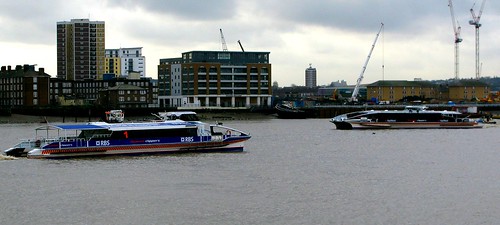I KNOW this site is called Greenwich.co.uk, but today I’m going to skip bail and write about the glory that is Deptford.
That is not, by the way, the heavy-handed sarcasm you sometimes find on lesser websites. Deptford really is a kind of miracle. Three fishmongers! No supermarkets! A thriving street market with knobbly vegetables! Surely there must be some plan to ruin it?
Oddly enough, this does not appear to be the case. True, a few years ago, leaflets with all the most dreaded danger words – “vibrant,” “Richard Rogers,” “continental-style piazza” – appeared, promising the “regeneration” of the Creekside area (that is, the construction of the usual crappy towers of “luxury apartments”.) The recession, thank God, seems to have killed that one off. Even bankers have their uses.
A redevelopment plan for the railway station and the area around it is, it transpires, going ahead. But in something unprecedented in the annals of “regeneration,” it may actually be better – or at least no worse – than what’s there now. I will miss the atmospheric old station, but suppose I may be in a minority. Most of the rest of Deptford High Street will be staying, and the buildings that are getting knocked down are mostly rubbish.
In the seventeenth century, Deptford gave us the diarist John Evelyn; in the sixteenth century it took away from us the playwright Christopher Marlowe (murdered in a local tavern – what a Deptford death); but in the twenty-first century, I think, what Deptford has given London is a potential model for subtle, non-destructive gentrification.
Nowhere can remain in a timewarp, and the area certainly needs more money in it. This is happening – there are, if you look carefully, quite a lot of bourgeois, Guardian-reading types in Deptford – but unlike in so many areas they seem to have arrived without overwhelming the existing residents.
Apart from a few fairly low-key outposts of the Converse-wearing classes – a couple of pubs, the railway carriage cafe, some arty things – the ordinary life of SE8 goes on without wall-to-wall estate agents, destination bars, cappucino shops, and all the other things that have spoiled Stoke Newington and Hoxton.
You can see this in places like my new favourite pub, the Dog and Bell in Prince Street. I have cycled past this place on my way home hundreds of times, but usually too late at night to go in. This week I happened to be passing at 9pm and what a find it was.
Time Out, London’s most reliably stupid magazine, describes the Dog and Bell as “Deptford’s best bar. That it’s dark, foreboding and located in no man’s land matters not a jot.” I suspect all this “matters not a jot” because none of it is actually true. The Dog and Bell is not “foreboding,” or even what they presumably meant to say, forbidding. It is not “dark.” It is not “located in no man’s land,” as if Prince Street was somehow West Belfast. Above all, of course, it is not a “bar.” It is a pub – a traditional backstreet pub – and one of the most perfect examples of the species I know.
There are wooden benches, yellow walls (would you say yellow was a “dark” colour? I wouldn’t), an open fire, mirrors with Fullers adverts. There are, I’m told, outstanding real ales (I wasn’t drinking). There is a warm welcome and decent food. There is even a skittles table (Time Out thinks it’s a billiards table) – which was, at the time I visited, being played on by a bloke in a flat cap and muffler and a bloke in a waistcoat.
Now our two players on the skittles were almost certainly middle-class: “aesthetically, it’s a very nice table,” one of them said. But it still felt right because the clientele was mixed and the place didn’t feel in the slightest bit ponced-up.
What’s Deptford’s secret? I think, perhaps, one reason it has not reached a critical mass of Guardianistas is that there’s very little period housing. Over the last twenty years, the London bourgeoisie have swarmed all over Zone Two in search of anything with sash windows. Not many of those in Deptford. Long may it stay scruffy and faintly rough, keeping to its path of gentle social change.

